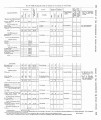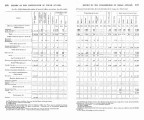| OCR Text |
Show past summer in raising crops more than suflcient for their snpport for the year. They owns large number of horses and cattle. A da,y-school has been 6stablished for them, at present attended by 16 children. The 'ttendance, it is expected, will soon reach 65. Sacs and Poxes.-The Sacs and Foxes of the Mississippi number at the present time 4G3. In 1846 they numbered 2,478. They have a. reservation of 483,840 acres, adjoining t,he Creeks on the west, and be-tween the North Fork of the Oauadian and the Red Fork of the Ar-kansas Rivers. They formerly occupied large tracts of country in Wisconsin, Iowa, and Missouri, wheuce they removed, by virtue of treaty stipulations, to a reservation within the presemt limits of Ka,nsas. By the terms of the treaties of 1859 and 1868, all their lauds in Eansas were ceded to the United States, and they were given in lieu thereof their present reservation. These Indians, once famous for their prowess in war, have not, fa! some years, made any marked impror~ement upon their former cond~t~ou. Still, they l~ava acco~nplislled a little, under highly adverse circumstances a,nd influences, iu the way of opening slnttll farms and in building houses, and arebeginning to show some regard for their women by relieving them of the burdens and labors heretofore required of them. There is hope of their further improve-ment, although they are still but one degree removed from the Blanket or Breech-Clout Indians. They have one. school in operation, with an attendance of only about 12 scholars. Three hundred and seventeen n~en~beorfs these tribes, after their remova.1 to Kansas, returned to Iowa, where they were permittetl to remaiu, and are now, under the act of Marc11 2, 1867, receiving their share of the tribal funds. They ha\-e purchased 419 acres of land in Tama Coun!,y, part of which they are cultivating. They are not nruch disposed to work, however, on lands of their own, preferring to labor for the white farmers in their vicinit3j and are still nluch giveu to roving and hunting. By the treaties of November 3, 1804, October 21, 1837, October 11, 1842, and February 18,1867, these Indians have permanent annuities, amo~~ut intoa. $51.000 anauallv. aud are su~nliedf or a limited number of years mith a physician, me"dicine, tobacdi, and salt, at a cost to the Government of $1,850 annually. 0saqes.-The Osa~esu. umberine 3.056. are native to the eeneral sec-tion oi' country wh&e they now i&e.' T6eir reservation is iouuded OII the northby the south line of Kansas, east by the ninety-sixth degree of west loogitude, anrl south and west by the Arlcansas River, and con-tains approximately 1,760,000 acres. Their location on this reservation has been effected after co~lsiderablec omplication. By the act of July 15, 1870! provisionwas made for sale of all the lands belongingto the Osages uzithln the limits of Kansas, and for their removal across the line iuto t.he Indian Territory. In accordance with the terms of this act, areser-vation was wlected by them, which was supposed to be immediately vest of the ninety-sixth degree of west longitude, hut a large portion of it, containingin factall the improvements made and all the really avail-able laud in the whole body, was found upon a subsequent survey to be east of it, that is, within the Cherokee country. To remedy this diffi-culty, Congress, by ?at of June 5, 1872, set apart their present reserva-tion, with the provlso that they should allow the Kansas tribe of Indians to settle on the same tract. Owing to the u~~settlecdo ndition of these Indians for several years past, and the limited amount of . funds Chat could be used for their benefit, they have not made much progress in civilization. Having now a fixed place of abode, and hav-ing large sums coming to them from the sale of their lands in Kansas, |



































































































